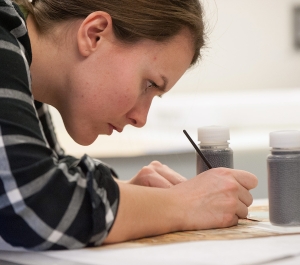
Conservation of Art and Cultural Heritage and Conservation Science and Imaging (M.A./M.S.)
Career Objectives
The M.A./M.S. in Conservation of Art and Cultural Heritage, and Conservation Science and Imaging values the multi-disciplinary nature of scientific and imaging analysis with that of conservation theory and practice.
The M.A. portion of the dual award is focused on conservation treatment practice and ethics; and, the M.S. is focused on the science (chemistry, physics and materials science) and imaging (optics, industrial photography and computational photography) required for the examination, characterization, documentation and display/storage of cultural materials.
Educational Objectives
The educational goals and career objectives are to provide the arts, humanities and cultural heritage sectors with well-educated, highly qualified, and responsible conservators. Graduates are ready for positions in museums, libraries, archives, and/or regional conservation centers.
Course Sequence
The first two years of the program involve intensive course, laboratory, and studio work.
Projects: Student projects are based on objects brought into the department during the annual Conservation Clinic, or belong to local museums such as the AKG Art Museum, the Buffalo Museum of Science, the Buffalo History Museum, and others. Professors and students work together to select appropriate individualized projects.
First Year
A Focus on Courses
First-year students take courses in paintings, paper, and objects. This interdisciplinary approach enriches students’ experience and provides excellent training for the problem solving necessary in conservation.
Second Year
Specialization
Second-year students also work in all areas, but emphasize their chosen areas of specialization. All students complete four course sequences in examination and documentation techniques and conservation science. This information is integrated into second-year specialization projects.
Third Year
Internships
The third and final year of the program consists of a year-long internship at a museum, institution, or private practice. At the end of the internship year, students return to campus for a presentation, at which time they receive their dual M.A./M.S. degrees.

Summer Experiences & Research Projects
During the summer months, following the first and second years of training, students are strongly encouraged to find summer experiences in conservation to improve their skills and explore the field. Some students may seek out summer internships, archaeological digs, or research projects. The department serves as a clearinghouse for various summer opportunities. Faculty work with students to find summer opportunities, but students may also arrange their own summer positions to match their particular conservation interests and training needs.

